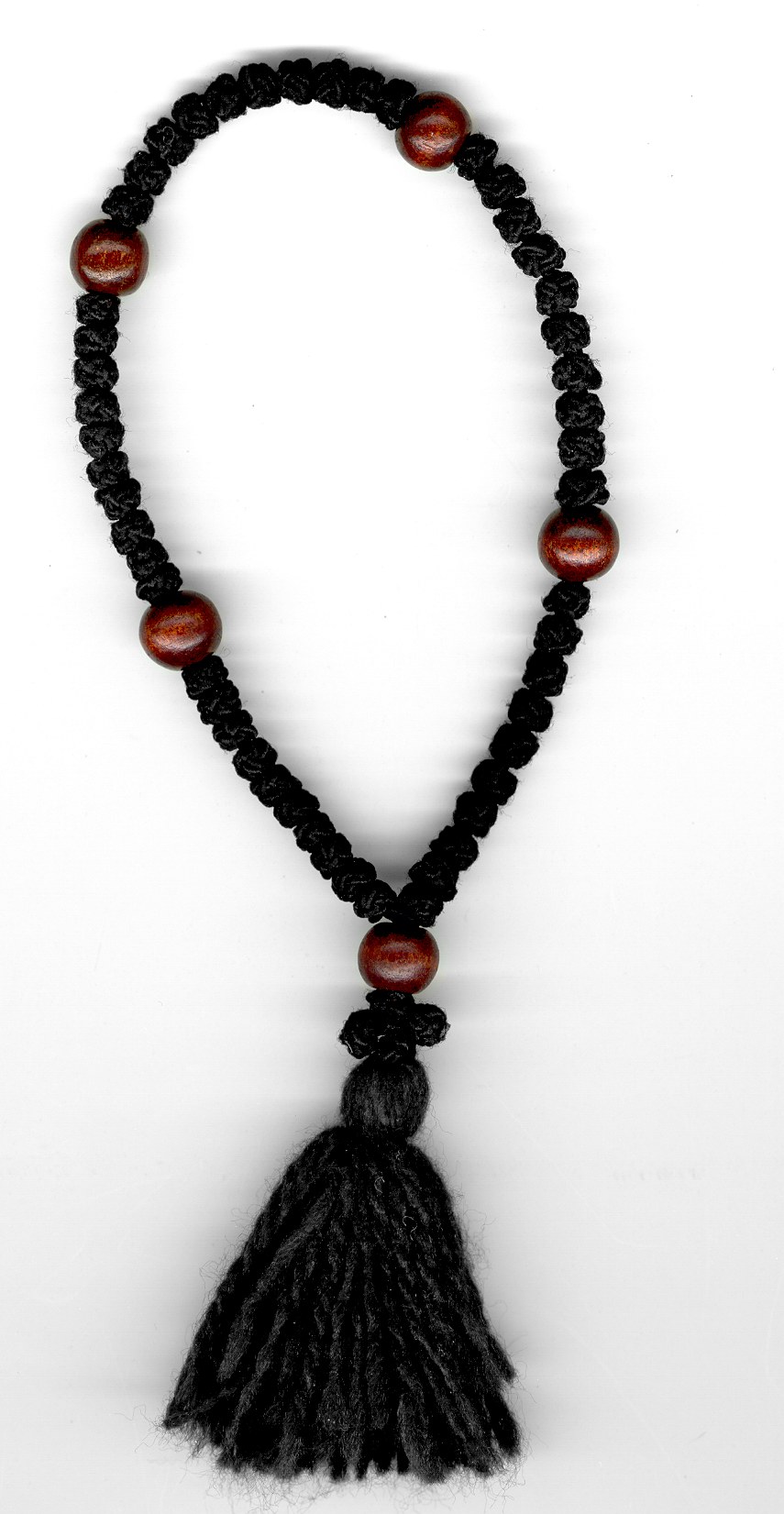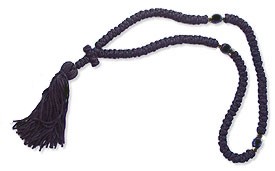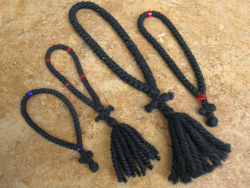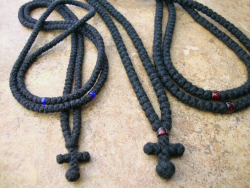Prayer rope
A Rope (Greek: κομποσκοίνι or κομβοσχοίνι, Russian: чётки, Tschotki or вервица, Vervitsa, Macedonian and Serbian: бројаница, Brojanica, Bulgarian: броеница, Broyenitsa, Romanian: Metanii or Metanier ) called, is a closed rosary at which the Jesus Prayer is performed by Orthodox Christians. Usually a Prayer Rope has 100 nodes, but there are also forms with 25, 30, 33 or 500 knots. The closed string is a symbol for the never-ending monastic prayer ( " pray without ceasing" ).
It is used in the Orthodox tradition, the Jesus prayer, less to count the prayers, but as an aid to concentration and a steady rhythm. In the Orthodox Church monks and nuns receive the prayer rope to profession.
When counting a Prayer Rope used only when Orthodox monks pray a certain number of prayers Jesus instead of the hours of prayer, if they can not attend at this time.
Its origin has to repeat the prayer rope in the tradition of the late antique oriental monasticism, short Bible quotes meditative. The Orthodox Church continues the tradition back to Pachomius, who helped in this way, monks, who could not read and write, perform a certain number of prayers or prostrations.
In Russia there is the custom to replace prayer times Liturgy of the Hours, or visit the liturgy by the recitation of a certain number of prayers Jesus. In this way, the Liturgy of the Hours can also be kept if it is not supplied access to the relevant books or someone is not able to perform a prayer time. The prayer rope helps in such cases is to count the number of prayers.
As a political symbol
For the specific choice of advertising in the population of Serbian origin, since the mid- 2000s at public appearances and on election posters borne by the Austrian politician Heinz Christian Strache, federal party leader and Parliamentary Group Leader of the right-wing populist Freedom Party, regular Brojanica.









